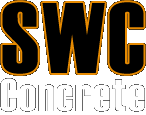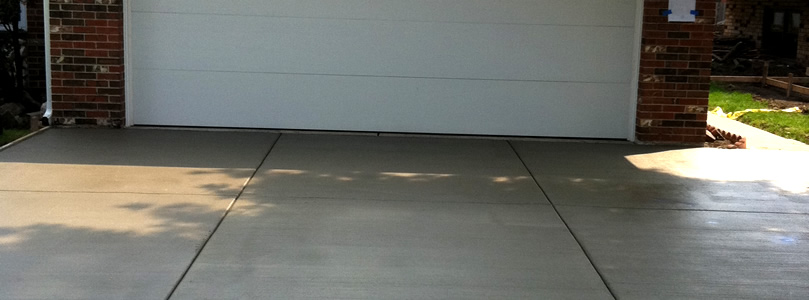quality concrete construction
The existing layer is easily removed with a front-loader(or by any method) and hauled away. The existing gravel base is reusable…but since the new concrete driveway will be thicker, some of the gravel must be removed to maintain proper elevation.
The gravel base is compacted with a vibratory plate compactor. For a new driveway, a gravel subbase is not needed, but the subgrade must be compacted in a similar manner.
The concrete should be placed as near as possible to its finished position…either chuted directly, or into wheelbarrows and wheeled to its final location. Use of shovels are recommended to ensure complete filling along the sides of the forms.
Strike off the concrete with a straight piece of lumber to smooth the surface and bring the slab to its proper elevation. Check for any low spots. Another pass with the piece of lumber provides a uniform surface for the following finishing operations. Immediately after strike off, a bullfloat is worked back and forth across the surface to remove any irregularities. Don't overwork, or the surface may be weakened. At this point, edges can be tooled into the concrete.
Surface bleed water must evaporate before proceeding with the final finishing. Properly specified concrete should allow finishing operations to begin almost immediately. A concrete broom is used for the final finish.
Before brooming, the surface should be stiff enough to retain marks or grooves left by the bristles of the broom. A trowel finish is not recommended because it could leave the surface slippery and unsafe. The rougher broom finish improves traction. Snap lines to indicate where joints go.
jointing
Joints in concrete pavements control the location and spread of cracks. They can be hand-tooled or saw cut, and are made to a depth of no less than 1 inch for a four inch thick slab. Joints should be spaced no more than 15 feet apart for a 4 inch slab.
after care
Two of the great advantages for using concrete is it's durability and ease of care. We recommend applying a high quality sealer on all exterior concrete exposed to freeze/thaw cycles. The sealer helps protect concrete from two things: absorbing moisture and being damaged from numerous freeze/thaw cycles. There are many brands of curing compounds, sealers and penetrating sealers.
There are liquid, acrylic-based copolymers. They are transparent and act as a film over the surface. This type of product has been on the market for years and is widely used due to the value for the money.
There are many different types of sealers and can be applied by brush, roller or by using a low-pressure airless sprayer. Application should be made per manufacturer's instructions.
By following these installation guidelines and combining them with good workmanship, you'll have a concrete driveway that will make a lasting impression for many years.
Disclaimer SWC Inc. disclaims any and all responsibility for the applications of the principles discussed in this publication or for the accuracy of the sources other than work performed or information developed by the Association.
Caution: Avoid prolonged contact between unhardened (wet) cement or concrete mixtures and skin surfaces. To prevent such contact, it is advisable to wear protective clothing. Skin areas that have been exposed to wet cement or concrete, either directly or through saturated clothing, should be thoroughly washed with water.
contact info
Serving Chicago and the northwest suburbs.
Residential / Commercial
Call today for a free estimate.
John Campobasso
Schaumburg, IL 60193
P: (847) 635-6313


